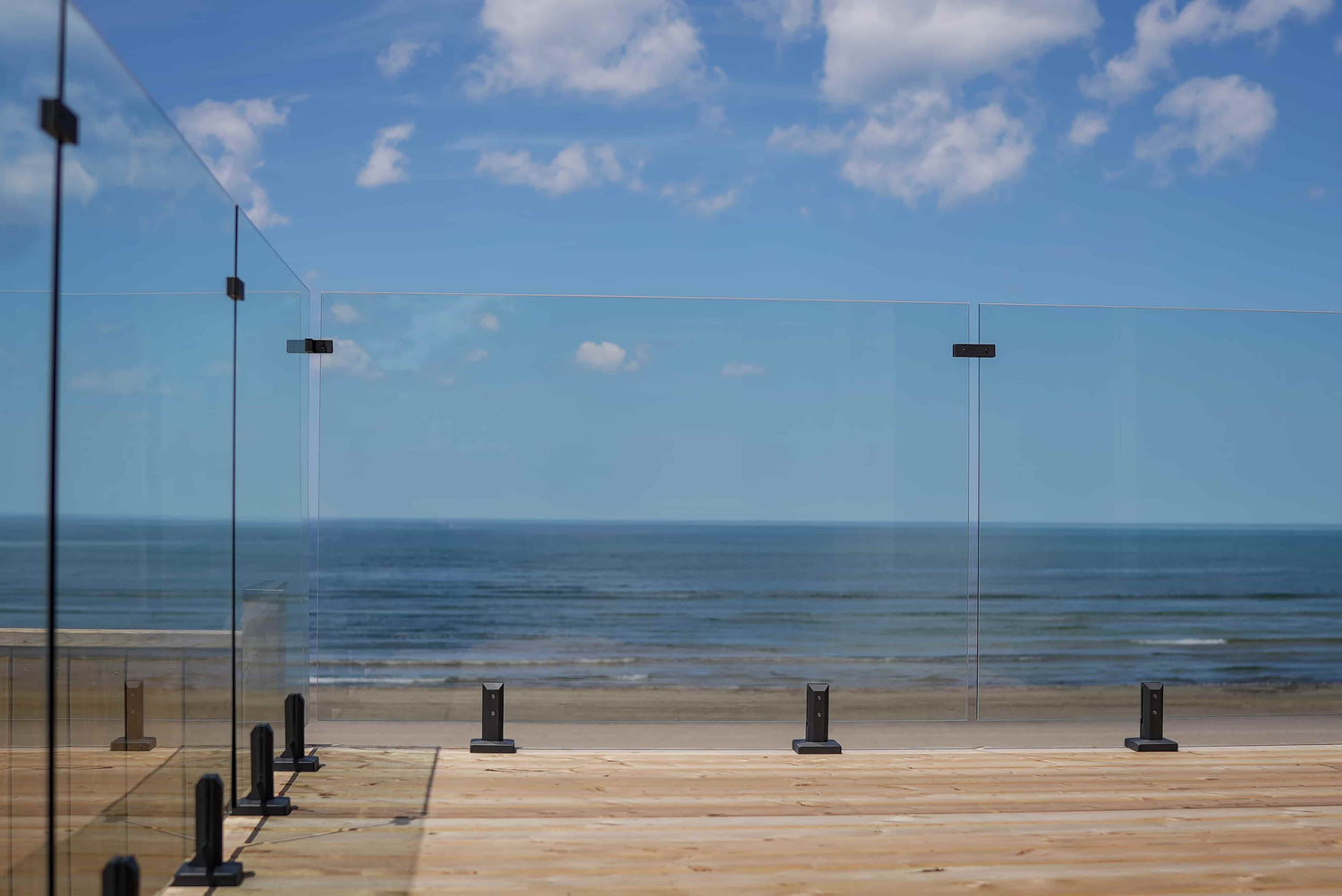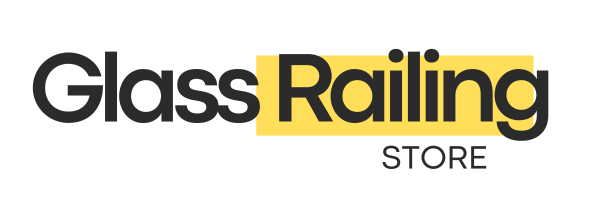New Mexico Glass Railing Standards

Standing on a deck in Santa Fe or Albuquerque, many homeowners imagine the view uninterrupted. Glass railings make that vision possible. These installations deliver both a minimalist aesthetic and a functional safety feature. While they blend well with modern architecture and offer a sense of openness, they must follow specific regulations to ensure they’re safe and up to code. Turning this vision into a durable and compliant structure means understanding New Mexico’s current building code. The rules are not optional—they determine what passes inspection and what could be deemed non-compliant or even hazardous.
As of July 14, 2023, New Mexico officially adopted the 2021 editions of the International Residential Code (IRC) and International Building Code (IBC). These form the foundation for glass railing requirements across the state. The codes are administered and enforced through the New Mexico Administrative Code (NMAC), specifically in sections 14.7.3 for residential buildings and 14.7.2 for commercial and multifamily dwellings. Every project involving glass railing systems must align with these standards to gain approval.
Residential Requirements
For single-family residences, the 2021 IRC outlines structural and dimensional requirements for guardrails and handrails. These include installing guardrails on any walking surface that is more than 30 inches above the ground. The guardrails must stand at least 36 inches in height, providing enough protection to reduce fall risk. In staircases, handrails must be placed between 34 and 38 inches from the stair tread nosing to ensure ergonomic support.
Openings within guardrails, including those between glass panels or between posts, must be designed so that a sphere four inches in diameter cannot pass through. This restriction is in place to protect young children and small pets from slipping through gaps. It’s important to measure these gaps precisely, especially with custom or frameless installations.
In addition to these spatial measurements, the railings must be constructed of durable, weather-resistant materials. When glass is part of the installation, it must meet the standards outlined under the IBC, which focuses on safety glass composition and load-bearing capabilities. Builders must also take into account wind load and other environmental stresses that may affect exposed areas like decks, balconies, and rooftop terraces.
Structural and Glass Standards
In commercial and multifamily buildings, the 2021 IBC provides greater detail on material specifications and performance expectations. According to Section 2407, glass used in guardrails must be either tempered or laminated safety glass. Annealed glass, which breaks into sharp shards, is not permitted under any circumstance. Tempered glass is stronger and, when broken, shatters into small, less harmful pieces. Laminated glass, on the other hand, contains a plastic interlayer that holds the glass together even when cracked, reducing the risk of falling shards.
For frameless designs, which are increasingly popular for their sleek look, tempered glass panels must be supported by a continuous top rail unless laminated glass with proven impact resistance is used. The rail serves as a backup support structure in the event that a panel fails or loosens. Without it, the entire system could be deemed non-compliant unless engineering tests and documentation prove otherwise.
All glass railing systems must be capable of resisting a concentrated load of at least 200 pounds applied in any direction at the top edge. This ensures the system can withstand real-world use, including pressure from people leaning or accidental impacts. Each glass panel must include permanent labeling from the manufacturer, specifying the glass type, its thickness, and relevant certifications. These labels help inspectors verify compliance on-site.
For unsupported or point-supported glass systems, detailed engineering documentation must be submitted. This documentation should confirm that the installation has been tested and certified for code compliance. Without this, even well-designed systems can fail the inspection process.

What to Know About Santa Fe and Other Localities
While New Mexico enforces building codes on a statewide level, cities like Santa Fe often add layers of regulation tied to sustainability or historic preservation. Santa Fe, in particular, has adopted green building codes that require energy-efficient practices. While these codes don't directly impact glass railing standards, they can influence project review timelines and documentation requirements.
Other areas, including Doña Ana, Bernalillo, and Sandoval counties, also follow the statewide building codes. However, local authorities may request additional documents such as structural drawings, product testing certifications, or installation plans—especially for custom-designed railing systems or projects involving steep slopes and uneven terrain. Always consult your local planning or building department before ordering materials or beginning site work.
Mistakes That Cause Project Delays
Common errors can delay glass railing approvals, even in well-planned projects. These mistakes include selecting glass that lacks appropriate safety certification, failing to meet the minimum height requirements, leaving gaps larger than four inches, omitting required structural documentation for unsupported glass, or forgetting to install a top rail when necessary.
Misunderstanding the difference between tempered and laminated glass also leads to setbacks. Some installers mistakenly believe tempered glass alone is sufficient in all cases. However, frameless systems using tempered glass must include a top rail unless laminated glass with tested impact resistance is used. Missing that requirement can mean tearing down and rebuilding parts of the system.
To avoid these pitfalls, builders and property owners can explore pre-engineered railing systems designed specifically to meet the 2021 IRC and IBC. These systems come with documentation that simplifies both approval and installation.
At-a-Glance: Key Requirements
|
Code Requirement |
Application |
Purpose |
|
Minimum guard height |
36 inches |
Prevents falls from elevated platforms |
|
Stair handrail range |
34 to 38 inches |
Promotes safe stair navigation |
|
Maximum opening width |
4 inches |
Blocks small children and pets from slipping |
|
Approved glass types |
Tempered or laminated safety glass |
Prevents dangerous breakage |
|
Required load strength |
200 pounds at top edge |
Confirms structural durability |
|
Top rail inclusion |
Mandatory unless tested laminated glass |
Offers fallback safety |
|
Labeling requirement |
Manufacturer, type, and thickness |
Aids code inspections |
|
Documentation needs |
Required for unsupported installations |
Proves structural reliability |
Closing Thoughts
Glass railings continue to gain popularity across New Mexico thanks to their clean lines and ability to merge indoor and outdoor environments. But design alone is not enough. A successful project must also meet the rigorous demands of current building codes. Understanding and applying the 2021 IRC and IBC ensures that your installation not only looks good but performs reliably and safely over time.
By using tested materials and confirming details like railing height, glass type, and structural integrity, homeowners and professionals alike can avoid unnecessary delays. Whether your project is residential or commercial, a deck remodel or a multi-story development, proper code adherence ensures smooth approval and long-term value.
Explore our full range of code-compliant railing systems to get started with confidence.
Questions People Often Ask
1. What codes apply in New Mexico?
The 2021 versions of the International Residential Code (IRC) and International Building Code (IBC) have been adopted through NMAC 14.7.3 and 14.7.2, and they govern all new construction involving glass railings.
2. Can cities adjust these rules?
Yes, cities like Santa Fe may include additional standards related to green building or historical aesthetics. These do not replace the core safety requirements but can introduce extra steps in the approval process.
3. What type of glass is allowed?
Only tempered or laminated safety glass may be used. Annealed glass is prohibited due to its tendency to shatter into sharp fragments.
4. Do I need documentation for unsupported panels?
Yes. All unsupported or point-fixed panels must include engineering certification to verify that the system meets applicable safety codes.
5. Are top rails always required?
Top rails are generally required for tempered glass installations. Laminated glass systems that have been tested for post-break integrity may be exempt, but only when proper documentation is provided.
Let customers speak for us

Barandales de vidrio cerca de usted
Descubra cómo The Glass Railing Store ha estado brindando un servicio excepcional a nuestros clientes, gracias a nuestro equipo dedicado y experto y su amor por nuestros productos de barandales de vidrio .







